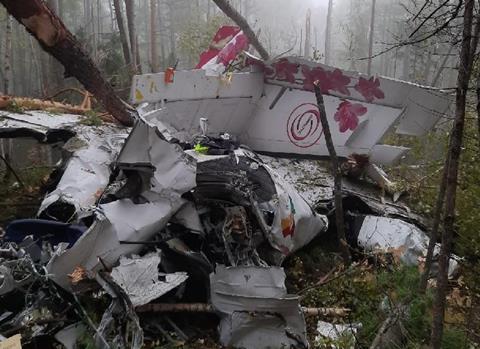Russian federal air transport regulator Rosaviatsia is recommending an analysis be conducted on the feasibility of banning commercial flights at night to airfields which have only visual approach capabilities and no instrument approach procedures.
The recommendation to the regulator’s territorial authorities follows the fatal accident involving an Aeroservis Let L-410 UVP-E20 which came down in a forest 4km from its destination, Kazachinsk, on 12 September.
Rosaviatsia says the L-410 was carrying out a missed approach at night, around 22:47 local time, in conditions of “limited visibility”.
Meteorological data for the region showed lowland fog and surface visibility down to 500m in places, with a low cloud base.
While 12 occupants survived the crash, three passengers and the first officer did not.

Kazachinsk did not have the ground installations to provide an instrument approach, and so the crew was attempting a visual landing. The airport had a mobile lighting complex available to aid the pilots in making visual contact with the airfield at night.
While the investigation is continuing, Rosaviatsia says controlled-flight-into-terrain accident “occur in most cases as a result of violation, often deliberate, of flight rules”, but also arise from unclear flight manual instructions or inadequate operator procedures.
It is recommending a review of operators’ landing and missed approach procedures, including validity of established minima at destination or alternate airports, as well as the feasibility analysis of the night visual-landing ban.
Rosaviatsia’s eastern Siberian division has prohibited Aeroservis from conducting night landings.
According to the regulator the captain of the L-410 had accumulated total time of just over 5,600h including 483h in command.


























